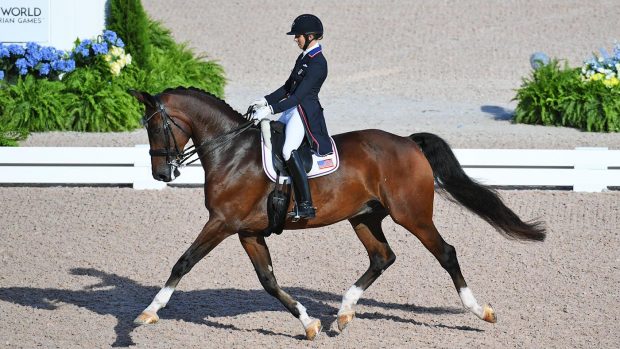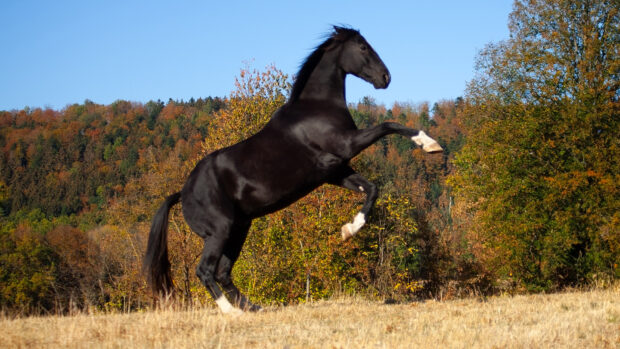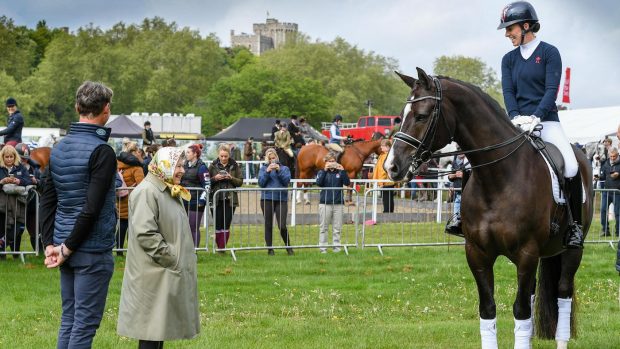Paris 2024 Olympic cross-country course designer Pierre Le Goupil has shared fresh nuggets about what fans and riders can expect from this summer’s track at Versailles.
Pierre was interviewed by Paris 2024 eventing co-manager Laurent Bousquet during the FEI eventing seminar on 20 January. He outlined his thought process behind designing the Olympic track, how he has worked with the wider sporting and Versailles Park team, and the overall vision of showcasing the best pictures of the sport while testing the best in the world.
“Designing in Versailles, like everywhere, is all about telling a story – we need to speak to the audience,” said Pierre, adding that there will be a good proportion of natural fences, using ground undulation, to test riders’ skills “in a spectacular but fair competition”.
“On the sport side it must be challenging enough and a true four-star question to test the best and decide the leaders, with still a good chance for everybody to finish. To achieve that, the first thing to consider is a good flow of the course.
“The specificity of our field of play in Versailles is that we are in a typical French public woodland; for those who know the place they know that it’s full of geometric layouts, passes and avenues with the Grand Canal in the middle.
“So this is a very particular context if we compare with most of the venues that course-designers are used to dealing with, think about Le Pin, Burghley, Pratoni, Lexington, etc, where the natural open, undulating land makes the job very different.
“Luckily, we’ve obtained the right to use a bit of the undergrowth and the reliefs (slopes and banks), and in some places to create what we need to make it very spectacular.”
H&H has previously covered testing of the pontoons on the Grand Canal, over which horses will gallop, plus how learnings from the London 2012 Olympic site in Greenwich (also a UNESCO world heritage site) are being applied in Versailles.
Pierre has been using 3D imaging as a way of bringing his ideas to life, which has proved a “determinant tool” in his communications and collaboration with Versailles and the wider team. He explained that this has meant the relevant people are able to clearly visualise what he was suggesting, which has been crucial in getting the go-ahead to make his plans for the protected landscape a reality.
Safety and welfare are paramount, with frangible technology used. Serious planning has also gone into the possibility of high temperatures and a lot of rain – or both. The track makes use of the “magnificent trees”, so the course is mainly in the shade, and groundwork has been undertaken to prevent the going from becoming too deep.
In terms of the course itself, followers can expect to see a multitude of options at combination fences.
“In some cases it won’t be necessary direct routes versus slow routes, but more like multiple choice questions,” Pierre said.
He added that this will mean riders will have to make choices and anticipate unexpected situations, which fits into his aim of creating interest.
“This is part of the story we’re telling: what option are they going to take?” he said.
“It’s been a great honour and there’s still a lot to do. It’s a particular showcase that gives us an extraordinary opportunity to show our sport at its best and luckily the team around me is strong and will help to produce this.”
You might also be interested in:

Horses gallop across Versailles’ Grand Canal pontoon in ‘hugely exciting’ Paris Olympics test

Fresh details as Paris gears up for equestrian events at 2024 Olympics

Early plans revealed for ‘most spectacular’ Paris 2024 equestrian venue

‘Absolute dream’: Paris 2024 Olympic cross-country course-designer revealed

Britain is all systems go for Paris 2024 as Olympic equestrian places are reshuffled
Horse & Hound magazine, out every Thursday, is packed with all the latest news and reports, as well as interviews, specials, nostalgia, vet and training advice. Find how you can enjoy the magazine delivered to your door every week, plus options to upgrade your subscription to access our online service that brings you breaking news and reports as well as other benefits.



